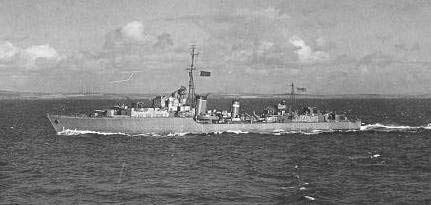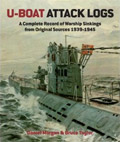HMS Somali (G 33)
British Destroyer

| Name | HMS Somali (G 33) | ||
| Type: | Destroyer (Tribal) | ||
| Tonnage | 1,870 tons | ||
| Completed | 1938 - Swan, Hunter & Wigham Richardson Ltd, Wallsend, Sunderland | ||
| Owner | The Admiralty | ||
| Homeport | |||
| Date of attack | 20 Sep 1942 | Nationality: | |
| Fate | Sunk by U-703 (Heinz Bielfeld) | ||
| Position | 74° 40'N, 2° 00'W - Grid AB 1836 | ||
| Complement | ? men (82 dead and ? survivors). | ||
| Convoy | QP-14 | ||
| Route | Murmansk - Scapa Flow | ||
| Cargo | |||
| History | After completion, HMS Somali (L 33) spent most of January 1939 around Portland as part of the 6th Destroyer Flotilla, carrying out torpedo and harbour exercises in severe weather. On 31 January, HMS Somali (F 33) and other British warships proceeded to Lisbon, Portugal, where they engaged in a public relations visit. About 5000 people visited her and the submarines alongside. Thereafter, they sailed to Gibraltar, arriving on 9 February, to participate in the Home and Mediterranean Fleet exercises later in the month. During a storm five days later, the port bow of the destroyer was damaged when the passenger ship Sibajak dragged her anchor and collided with the destroyer. On 3 Sep 1939, the 6th Destroyer Flotilla was screening British and French battlecruisers south of Iceland. Two hours after declaration of war, the HMS Somali (G 33) sighted an unidentified vessel being camouflaged at sea. The ship was the German merchant Hannah Böge (2377 grt), which was captured as the first prize in the war at sea. The destroyer spent the rest of the year in sea patrols and convoy duty. On 29/30 October, she claimed a U-boat together with HMS Tartar (F 43) and HMS Ashanti (F 51) while escorting a Norwegian convoy, but no U-boat was lost on that day. These destroyers also screened capital ships in the Atlantic and hunted the German battlecruisers Scharnhorst and Gneisenau. During the winter of 1939, the engines of the destroyer ran smoothly but she did not escape the turbine and feed-water troubles that afflicted the other Tribals. A short stay at Smith’s Dock, Middlesbrough rectified the problems with the machinery. In April 1940, the HMS Somali (F 33) took part in the landings in Norway and investigated several Norwegian fjords as suitable landing spots for an Allied Expeditionary Force and later participated in many of the assaults on German held positions. On 14 May, while coming to the aid of a sinking ship off the Norwegian coast, the destroyer became the target of German bombers. Despite of zigzagging at high speed, the last bomb hit the ship at the waterline under her starboard anchor. The bulkhead was shored up and she had to return to Britain for repairs at a maximum speed of 10 knots. After a refit, the ship again became the leader of the 6th Destroyer Flotilla and spent most of the winter of 1940 screening Home Fleet sweeps. In the night of 23/24 October, the German weather ship WBS 5/Adolf Vinnen was shelled and sunk by HMS Somali (G 33), HMS Punjabi (G 21) and HMS Matabele (G 26) off Stadlandet, Norway. On 3/4 March 1941, the HMS Somali (G 33) (Capt Caslon) participated in Operation Claymore, a successful raid against the Lofoten Islands, Norway. During the operation, the destroyer captured the German harbour defence vessel NN 04/Krebs (376 grt) after disabling her with gunfire. They discovered important documents and a set of spare rotors for the German Enigma coding machine, which enabled the specialists at Bletchley Park to break into a German radio code shortly thereafter. On 7 May 1941, the HMS Somali (G 33) captured the German weather ship WBS 6/München near Jan Mayen, a prize which yielded valuable documents for Bletchley Park. Later that month, she participated in the hunt of the German battleship Bismarck, but ran low on fuel and had to return to base. During June/July 1941, the hull of the ship was strengthened, her after funnel was cut down and radar equipment installed in the Thornycroft’s Yard in Southampton. On 4 August, the destroyer was part of the escort for the HMS Prince of Wales (53), which carried the Prime Minister Winston Churchill from Scapa Flow to his Atlantic Charter meeting in Placentia Bay, Newfoundland. But the weather became so bad that all destroyers were ordered home at 25° West, while the battleship proceeded alone at high speed. Several other screening operations followed between Iceland and the Orkneys and around Christmas 1941, HMS Somali (G 33), HMS Ashanti (G 51), HMS Bedouin (G 67) and HMS Eskimo (G 75) took part in a another raid on the Lofoten Islands, but their assault was curtailed by the presence of the German Luftwaffe. | ||
| Notes on event | At 19.55 hours on 20 Sep 1942, U-703 fired a spread of three torpedoes at the HMS Somali (G 33) (LtCdr C. Maud) and saw one hit after 1 minute 32 seconds. The destroyer had escorted convoy PQ-18 to Murmansk and was now screening QP-14 on her homebound voyage. HMS Ashanti (G 51) had unsuccessfully hunted a U-boat about 20 miles behind convoy and rejoined at full speed, but was then low on fuel oil. She thus changed places with HMS Somali (G 33) on the inner screen to await a favourable opportunity to refuel. Shortly after taking position in the outer screen, the HMS Somali (G 33) was hit by one torpedo. The explosion blew the torpedo tubes over the side and cut all of the port side main stringers so that the ship was only held together by the upper deck and starboard side as far as the keel. The port engine fell through the bottom of the ship and the engine and gear rooms filled with water. The leaking bulkheads on either side were promptly shored up and seemed to be holding but there was no light or power except from an unreliable auxiliary diesel generator which powered the bilge pumps. In the night on 23/24 September, the weather was getting worse north of Iceland in 69°00N/15°30W (a distance of 420 miles) and her plates were groaning terribly. In the middle of a snow squall, observers on the bridge of HMS Ashanti (G 51) saw a blue flash behind them. The towline and the electric cable had snapped and a piece of the cable was hanging over the stern. Quickly, a searchlight was brought to bear on the crippled ship. By now, HMS Somali (G 33) had folded in half like a hinge with bow and stern climbing skywards. For a moment, she hung motionlessly; the deckplating then snapped and her bulkheads collapsed. Her stern capsized and sank quickly and the bow went vertically and steadily, only 35 men of the skeleton crew could be rescued. | ||
| On board | We have details of 90 people who were on board. | ||
If you can help us with any additional information on this vessel then please contact us.
Media links
|
As an Amazon Associate uboat.net earns a commission from qualifying purchases.


